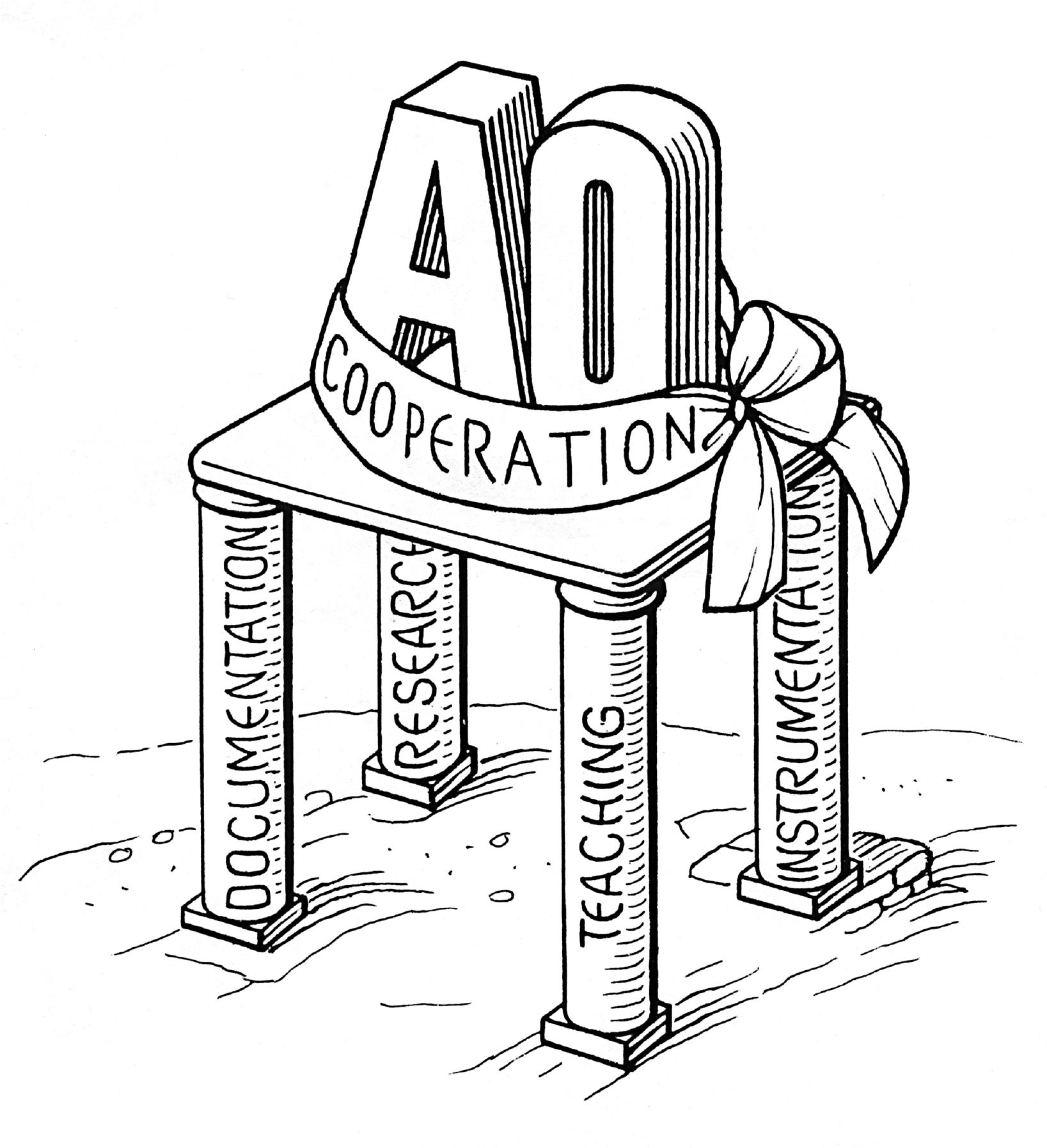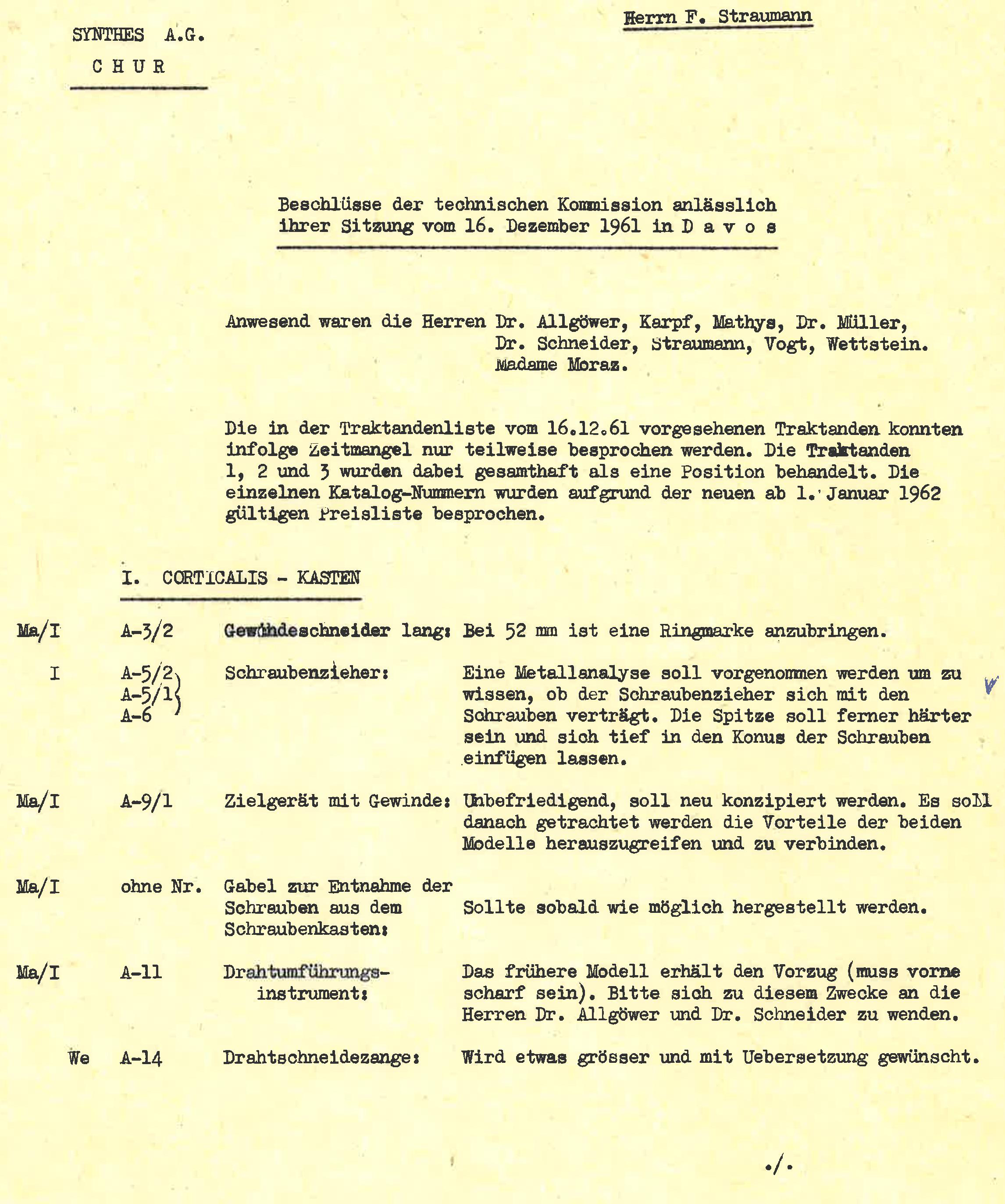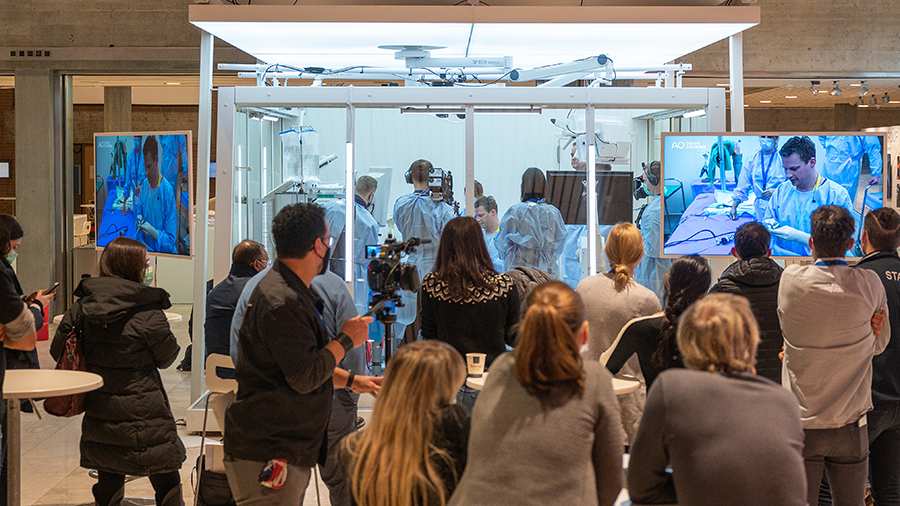
60 years AO Technical Commission—Four pillars concept for the success of the “revolution”
Despite the tradition of adopting a conservative approach in the management of fractures, the five founders of the ‘AO Cooperation’ envisaged better healing and patient outcomes with open reduction and internal fixation. While the idea of open reduction and internal fixation was not well accepted by the orthopedic surgeon community in the 1950s, Maurice E Müller, Hans Willenegger, Martin Allgöwer, Robert Schneider, and Walter Bandi identified four key concepts that would be integral in the adoption and success of this new ‘revolution’ in fracture treatment. The four ‘pillars’ were defined in 1959 as Teaching, Research, Documentation, and Instrumentation and provided a clear rationale for the adoption of internal fixation techniques (Fig 1).
Fig 1 The Four Pillars of the AO Cooperation Agreement defined in 1959 by the five Founding Fathers.
Hardware is critical in the management of fractures when using an internal fixation technique. To ensure consistency in production and safety in usage, the founders recognized the need to work with a single partner in the development of both implants and instruments. Implants were offered in different sizes for fracture fixation in specific anatomical areas and tested to ensure that clinical needs would be successfully met. Instruments were used and approved by the founders and partner engineers to confirm indications for use as well as robustness of the material. In December 1960, Synthes AG Chur (currently known as AO Technology AG) was established to coordinate instrument production, market presentation, and profit distribution.
AO Technische Kommission (AOTK) established in 1961
In November 1961, the AO founders established the AO Technische Kommission that was simply known worldwide as the AOTK for many decades. The AO Technical Commission (AO TC) was the responsible department for the development and approval of innovative surgical techniques, implants, and instruments. The AO TC controlled all “Synthes” catalogues and commercial material and guaranteed that the products offered were identical with those described in the AO textbooks. Only instruments and implants that were approved by the AO TC were promoted for sale with the registered trademark “Synthes.”
The first meeting of the AO TC on December 16, 1961 was an informal gathering of the four AO founders and Synthes AG Chur shareholders together with producers Robert Mathys, Sr, and Fritz Straumann (Fig 2). The group continued to meet regularly, and decisions made by majority vote were equally binding for all AO TC members, surgeons, and producers. As the AO developed, the AO TC also grew to encompass a large group of surgeons.
Fig 2 Minutes taken from the inaugural meeting of the AO Technische Kommission in 1961.
To expand at a faster rate and allow for more flexibility, the AO TC established specialist subgroups in 1991 while remaining the exclusive approver of innovative techniques and technologies. In 2004, the birth of Trauma, Spine, and Craniomaxillofacial Surgery divisions further reflected the increasing demand for specialization, and the success of this structure remains today.
Are you interested in the complete AO Technical Commission narrative? Then, check out the detailed timeline here.
Watch our celebration video here:
You might also be interested in
Partnership with Rimasys
AO Foundation and Rimasys enter strategic partnership to advance surgical education.
AO TC Executive Board welcomes a new Chairperson
The AO Technical Commission (AO TC) is delighted to welcome Maarten Spruit as the new Chair of the AO Technical Commission Executive Board (TCEB).
AO TC Innovation Prize awarded to the Cervical Spine Expert Group
In recognition of advancements in Posterior Cervical Fusion (PCF) and development of the Symphony Occipito-Cervico-Thoracic System.

Strengthening innovation within the AO
See how the AO ITC boosts the AO's innovation potential and delivers results for patients across the globe.





